Trees Birds Mammals Fish Amphibians Reptiles
Wild Algarve
Bookshop
Libellula quadrimaculata - Four-spotted Chaser dragonfly
Phylum: Arthropoda - Class: Insecta - Order: Odonata - Family: Libellulidae
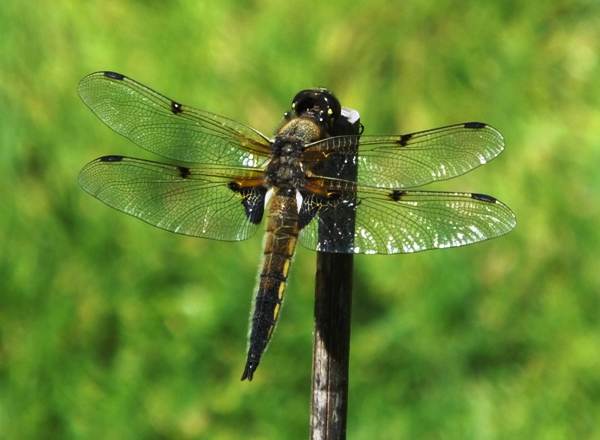
This is one of the first dragonflies commonly seen flying over garden ponds and small lakes, sometimes appearing as early as mid April and usually at its most plentiful towards the end of May.
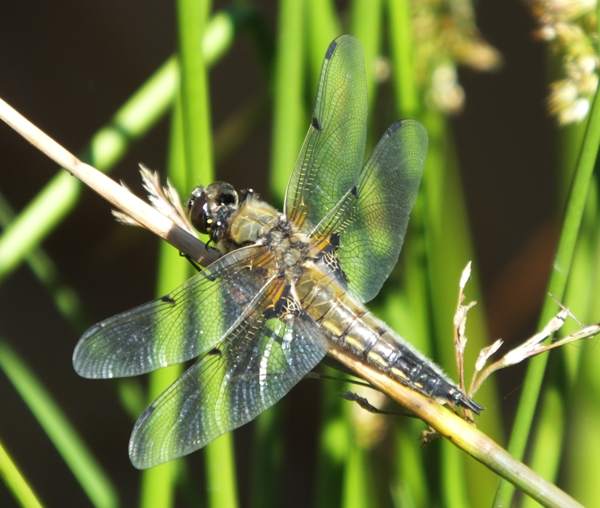
Description
At 45 - 48mm long and with a wingspan of 74 - 78mm, this is one of the larger dragonflies that make use of garden ponds. The male and female are very similar in colouring, with yellowish-brown bodies that are palest near the thorax and progressively darker towards the tip of the abdomen. There are also distinctive yellow markings along the sides of the abdomen; however, the most obvious distinguishing feature of this dragonfly is referred to in its common name. In addition to a dark spot near the tip of each wing, there is another dark spot near the middle of the leading edge.
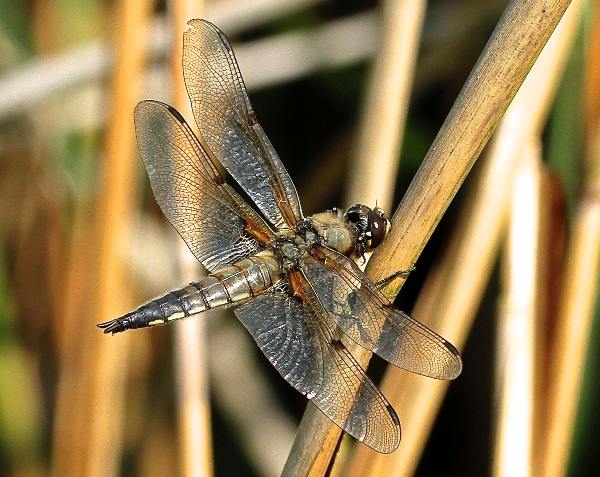
Distribution
The Four-spotted Chaser is fairly common and widespread in Britain and Ireland; elsewhere its range includes most of mainland Europe, Asia and North America.
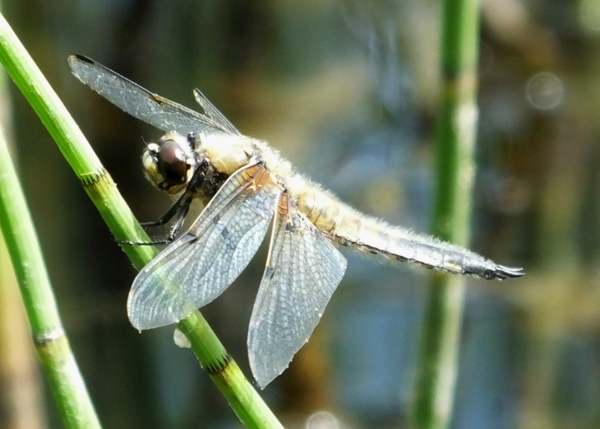
Flight period
In Britain, Four-spotted Chasers can usually be seen on the wing from Late April until mid August.
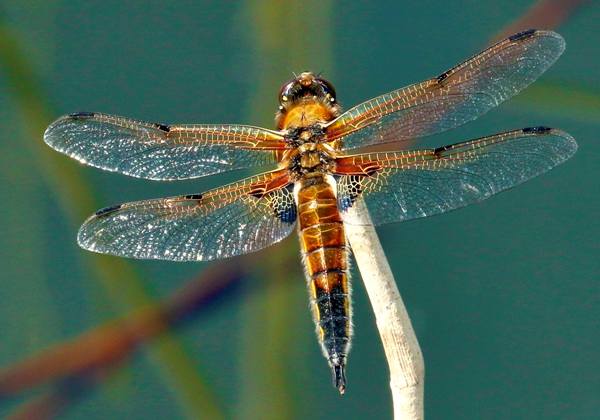
Life cycle
Mating usually takes place in the air. The female then lays her eggs in the weedy margins of ponds, jabbing her ovipositor into the water repeatedly. Sometimes the male guards her by hovering close by.
The eggs hatch after about four weeks, and the nymphs (also referred to as naiads) live in the water for two years or sometimes more, depending on water temperature and food availability.
When fully grown, in spring the nymph leave the water by climbing up emergent vegetation or a partly-submerged twig; then the winged adult sheds a final skin (known as an exuvium, sometimes misspelt as exuvia; the plural is exuviae) and dries its wings before making its maiden flight.
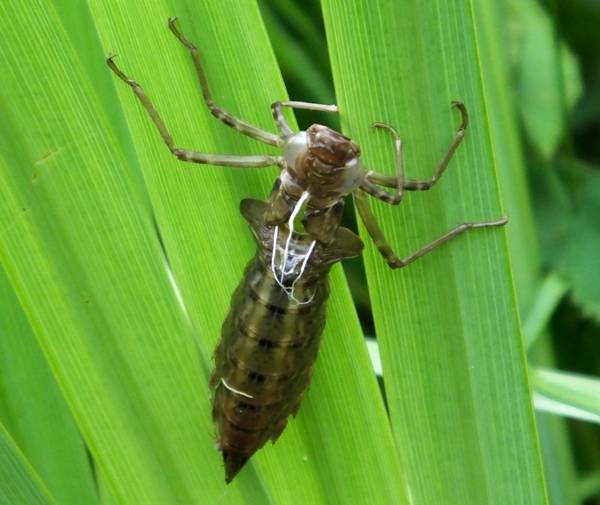
Above: exuvium of a Libellula dragonfly
Food sources
Small insects including gnats, midges and mosquitoes make up the bulk of the diet of adult Four-spotted Chasers. When it catches anything other than a tiny insect - a Pond Olive for example - the Four-spotted Chaser takes its prey back to a waterside perch, such as an emergent twig or a reed; there it eats the body and discards the wings. Beneath a much-used perch beside a garden pond, you may see a collection of discarded insect wings. Those who study aquatic insects are able to identify the deceased owners of these wings, at least to genus level, and so investigate the diet of this fascinating dragonfly.
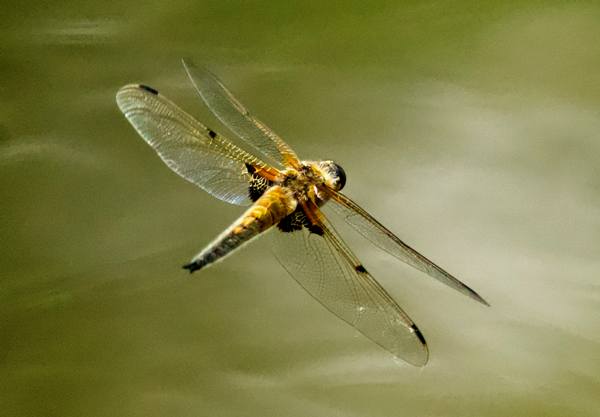
Acknowledgements
This page includes pictures kindly contributed by James Wainscoat.
Excited by rivers and streams? So are we, and we're pretty sure you would find the Winding River Mystery trilogy of action-packed thrillers gripping reading too. Dead Drift, Dead Cert, and Dead End are Pat O'Reilly's latest river-based novels, and now they are available in ebook format. Full details on our website here...
Buy each volume in ebook format for only £2.47 on Amazon... Paperbacks also available on Amazon at £6.95 each. All proceeds go towards keeping the First Nature website online.
Please Help Us: If you have found this information interesting and useful, please consider helping to keep First Nature online by making a small donation towards the web hosting and internet costs.
Any donations over and above the essential running costs will help support the conservation work of Plantlife, the Rivers Trust and charitable botanic gardens - as do author royalties and publisher proceeds from books by Pat and Sue.